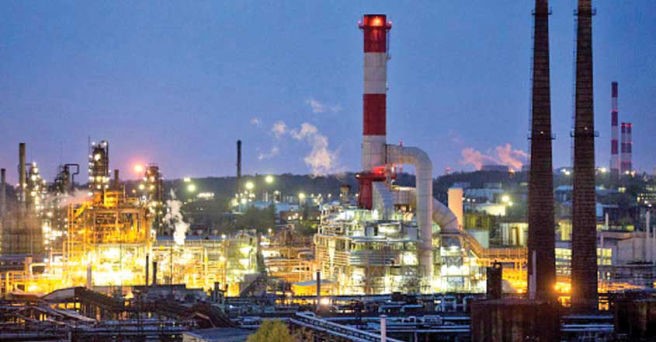Description

Copyright infringement not intended
Context: The Coal Ministry of India has announced a plan to invest INR 6,000 crore in coal gasification projects, which can help reduce the country's dependence on imported natural gas, methanol, ammonia, and other products. The plan aims to gasify 100 million tonnes of coal by 2030.
Details
- India's natural gas production has been declining over the years, while its demand has been increasing. To address these challenges, India has been exploring various ways to enhance its domestic production and utilization of natural gas and other alternative fuels.
- One of the strategies adopted by the government is to promote coal gasification projects in the country.
- In 2020, the government announced several policy measures to incentivize coal gasification, such as granting coal linkage at 20% lower prices than the notified price for non-regulated sectors, allowing 100% foreign direct investment (FDI) in coal mining and associated infrastructure, and providing viability gap funding (VGF) for SNG projects.
- The government recently announced that it will allocate Rs 6,000 crore for a comprehensive programme to support coal gasification projects in the country.
|
What is Coal Gasification?
- Coal gasification is a process of converting coal into a gaseous mixture called syngas, which consists of carbon monoxide, hydrogen, methane, carbon dioxide and water vapour.
-
- Syngas can be used as a fuel for power generation or as a feedstock for producing various chemicals and fuels, such as synthetic natural gas (SNG), methanol, ethanol, ammonia and gasoline.
- Coal gasification involves partially oxidizing coal at high temperatures and pressures in the presence of steam or oxygen. The process can be carried out in different types of reactors, such as fixed bed, fluidized bed, entrained flow or moving bed. Depending on the reactor design and operating conditions, the composition and quality of syngas can vary.
|
Aim
- To achieve coal gasification of 100 million tonnes of coal by 2030, which is expected to result in methanol production of 20 million tonnes, SNG production of 50 million standard cubic meters per day (MMSCMD), and fertilizer production of 11 million tonnes.
Significances
- Reducing India's dependence on imported natural gas, methanol, ammonia and other products, thereby saving foreign exchange and enhancing energy security.
- Creating employment opportunities and boosting economic growth in the coal-rich regions.
- Promoting cleaner and greener use of coal by reducing its carbon footprint and emissions.
- Diversifying India's energy mix and increasing its share of renewable energy sources.
- Enhancing India's self-reliance and competitiveness in various sectors such as fertilizer, chemical, steel, power and transport.

Challenges
- High capital and operating costs of coal gasification projects may deter private investment and require substantial government support.
- The lack of adequate infrastructure and logistics for transporting coal and gas across the country may increase the cost and time of project implementation.
- Uncertainty and volatility in the market prices and demand for natural gas and other products may affect the viability and profitability of coal gasification projects.
- Environmental and social concerns related to coal mining, land acquisition, water consumption, waste disposal and greenhouse gas emissions may require stringent regulatory compliance and public consultation.
- Technological and operational challenges related to scaling up coal gasification projects from pilot to commercial scale, ensuring quality and reliability of gas output, and integrating with downstream industries.
To overcome the challenges and achieve the vision of 100 MT coal gasification by 2030, India needs to take several measures to create an enabling environment for the coal gasification sector.
Some of the possible measures are:
Technology development and demonstration
- India needs to invest in research and development (R&D) and innovation for developing indigenous technologies and expertise for coal gasification. Establish pilot and demonstration projects for testing and validating various technologies and processes for coal gasification.
- India also needs to collaborate with foreign countries and institutions for technology transfer and adaptation.
Policy and regulatory framework
- India needs to formulate a comprehensive and integrated policy and regulatory framework for coal gasification that can provide a level playing field for all stakeholders and address their concerns and expectations.
- Needs to streamline the procedures and processes for obtaining various approvals and clearances for coal gasification projects.
- Needs to create a single-window mechanism for facilitating coordination and communication among various ministries and agencies involved in coal gasification.
Financing and risk mitigation
- India needs to develop innovative financing and risk mitigation mechanisms for coal gasification projects that can leverage domestic and foreign sources of capital and reduce the cost of capital. India also needs to provide fiscal incentives such as subsidies, tax breaks, duty exemptions, etc. for coal gasification projects. India also needs to promote private sector participation and public-private partnerships for coal gasification projects.
Stakeholder engagement and public awareness
- India needs to conduct regular stakeholder engagement and consultation activities for involving various stakeholders in the planning, implementation and monitoring of coal gasification projects.
- Needs to conduct public awareness campaigns for educating the public about the benefits and impacts of coal gasification and addressing their misconceptions and apprehensions about the technology.

Conclusion:
- Coal gasification is promising technologies that can help India leverage its abundant coal resources to meet its growing energy and industrial needs. The government's programme to promote coal gasification projects is a welcome step that can boost India's self-reliance and competitiveness in various sectors. However, the programme also entails significant challenges and risks that need to be addressed effectively. With proper planning, implementation and monitoring, the programme can achieve its objectives and contribute to India's sustainable development.
Must-Read Articles:
Coal Production in India: https://www.iasgyan.in/daily-current-affairs/coal-production-in-india
|
PRACTICE QUESTION
Q. What is coal gasification?
A) The process of burning coal to produce heat and electricity.
B) The process of converting coal into liquid fuels such as diesel and gasoline.
C) The process of producing syngas, a mixture of carbon monoxide and hydrogen, from coal and water, air or oxygen.
D) The process of extracting natural gas from coal seams.
Answer: C
Explanation: Coal gasification is an industrial process that converts coal into syngas, which can be used for various purposes such as making ammonia, methanol, synthetic natural gas, or electricity.
|
https://economictimes.indiatimes.com/industry/energy/coal-ministry-to-draw-scheme-for-coal-gasification-projects-worth-rs-6000-cr/articleshow/101750772.cms?from=mdr















